
In the first episode of the show "Tucci in Italy" premiering in May 2025, actor and host Stanley Tucci visits the Cibleo restaurant in Florence, Italy - Photo: Screenshot
Here, Stanley Tucci enjoys dishes that are both Japanese in spirit and Tuscan in character: salmon sliced thinly like prosciutto, sprinkled with bonito flakes and cheese, or raw swordfish marrow served in a backbone reminiscent of traditional ossobuco.
"We don't call it fusion, but rather learning how Japanese people respect ingredients and stay connected to where they live," shared chef Giulio Picchi.
From 'mixing' to 'understanding'
Around the early 2000s, "fusion" was the keyword of culinary creativity with shi dishes combined with pasta, kimchi with taco...
Although visually impressive, many dishes are only striking in appearance and lack cultural depth.

Crispy spinach with chickpea flour, lampredotto meatballs mixed with miso and yuzu, and topped with bonito flakes at Cibleo restaurant in Florence - Photo: Screenshot
In contrast, the Japanese philosophy encapsulated in the “spirit of washoku” is based on balance: between ingredients and people, between technique and emotion. The Japanese have the concept of shun , which honors seasonal ingredients, using them when they are at their peak of flavor.
This mindset inspires many international chefs: not copying recipes, but learning to feel, respect and exploit ingredients delicately.
In Paris, chef Mory Sacko, who is of French and West African descent, built his restaurant Mosuke on a respect for ingredients and restraint in technique.
Chef Mory Sacko says it's not about blending, but about finding common ground between culinary philosophies to create harmony.
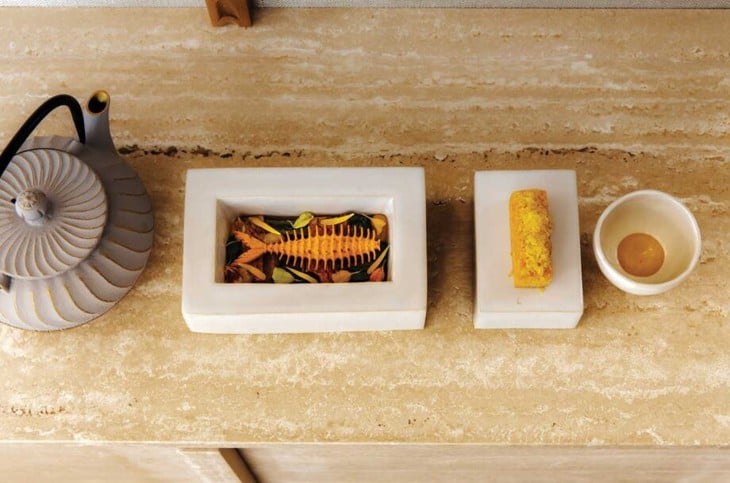
Mory Sacko's signature pepper soup combines bouillabaisse (a traditional fish soup from Marseille, France), seafood and West African spices, while adding a touch of katsuobushi (dried Japanese bonito flakes) for a subtle layer of umami - Photo: Virginie Garnier

One of the signature dishes at Inja (New Delhi, India) is the Hokkaido scallop "panta bhat" which combines traditionally fermented Bengali rice with natto gohan (Japanese fermented soybean rice), reflecting the philosophy of fermentation, seasonal eating and respect for ingredients - Photo: Indian Food Freak
In New Delhi, chef Adwait Anantwar at Inja restaurant transforms sushi into an Indian-flavored experience, using shiso leaves (a Japanese leaf in the mint family) wrapped with dried mango and pickled ginger, while still maintaining the purity of the Japanese spirit.
Cuisine as a cross-linguistic exchange
Japanese philosophy is learned by many international chefs because it is flexible, does not require them to copy recipes but still retains the original spirit.
In Sydney, chefs are experimenting with tempura (fried food dipped in batter, usually vegetables or seafood) using local vegetables.
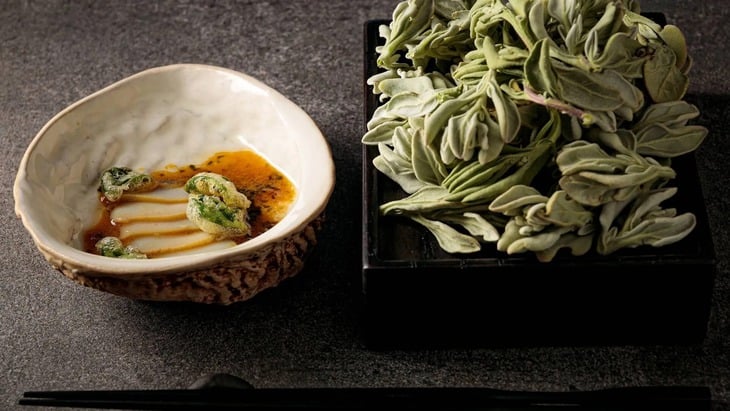
In Cape Town, Fyn restaurant uses dashi (a basic Japanese stock, often made from dried bonito flakes and seaweed) from South African seafood instead of Japanese dried bonito, combining local ingredients with Japanese techniques - Photo: Fyn
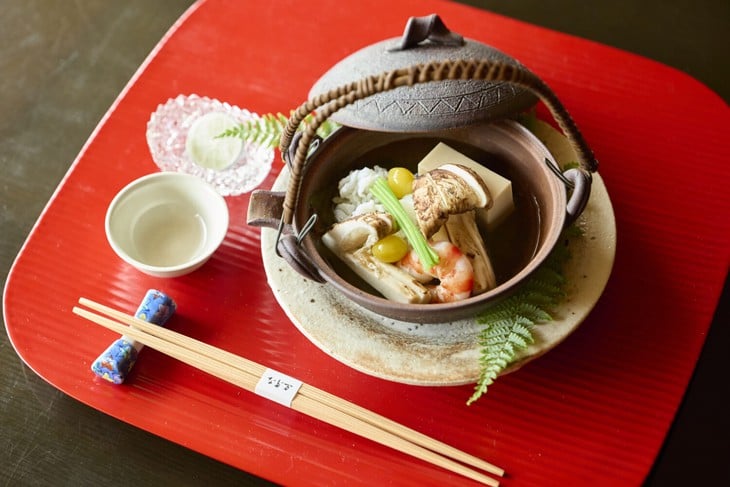
In the Asian region, chef Yoshihiro Narisawa in Tokyo, Japan is known for his restaurant Narisawa, where he combines native Japanese ingredients with inspiration from nature and the seasons. Dishes like Matsutake Dobin Mushi - a soup of matsutake mushrooms (a precious Japanese mushroom) steamed in a dobin (small teapot) - celebrate the flavor of the ingredients while reflecting the philosophy of tranquility and the seasons - Photo: goodie-foodie

In Hong Kong, chef Vicky Cheng of VEA restaurant combines the Japanese spirit in the way of handling ingredients and balancing flavors to express modern Chinese dishes, typically grilled sea cucumber served with female crab mousse and 22-year-old Hua Diao wine, maintaining both sophistication and exuding the elegance typical of VEA - Photo: theluxeologist
These methods demonstrate flexibility: exploiting local ingredients while maintaining the Japanese spirit of technique, balancing and still retaining natural, deep flavors without the need for additional spices.
Choosing seasonal fish, cutting vegetables along the grain, and presenting each dish in small portions all express the spirit of "less is more, slower is more" in Japanese cuisine.
This means emphasizing the use of few but high-quality ingredients, meticulously prepared ("less is more"), while respecting time and season to achieve full flavor, encouraging slow enjoyment, feeling every detail ("slow but deep").
Source: https://tuoitre.vn/am-thuc-nhat-it-ma-tinh-cham-ma-sau-20251103011727345.htm




![[Photo] Panorama of the Patriotic Emulation Congress of Nhan Dan Newspaper for the period 2025-2030](https://vphoto.vietnam.vn/thumb/1200x675/vietnam/resource/IMAGE/2025/11/04/1762252775462_ndo_br_dhthiduayeuncbaond-6125-jpg.webp)
![[Photo] Ca Mau "struggling" to cope with the highest tide of the year, forecast to exceed alert level 3](https://vphoto.vietnam.vn/thumb/1200x675/vietnam/resource/IMAGE/2025/11/04/1762235371445_ndo_br_trieu-cuong-2-6486-jpg.webp)
![[Photo] Ho Chi Minh City Youth Take Action for a Cleaner Environment](https://vphoto.vietnam.vn/thumb/1200x675/vietnam/resource/IMAGE/2025/11/04/1762233574890_550816358-1108586934787014-6430522970717297480-n-1-jpg.webp)
![[Photo] The road connecting Dong Nai with Ho Chi Minh City is still unfinished after 5 years of construction.](https://vphoto.vietnam.vn/thumb/1200x675/vietnam/resource/IMAGE/2025/11/04/1762241675985_ndo_br_dji-20251104104418-0635-d-resize-1295-jpg.webp)

















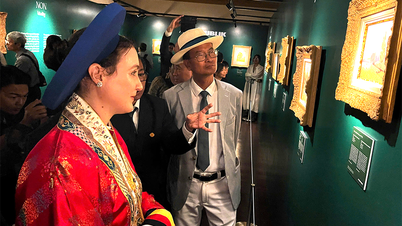












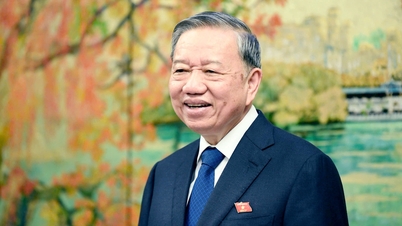







































































Comment (0)